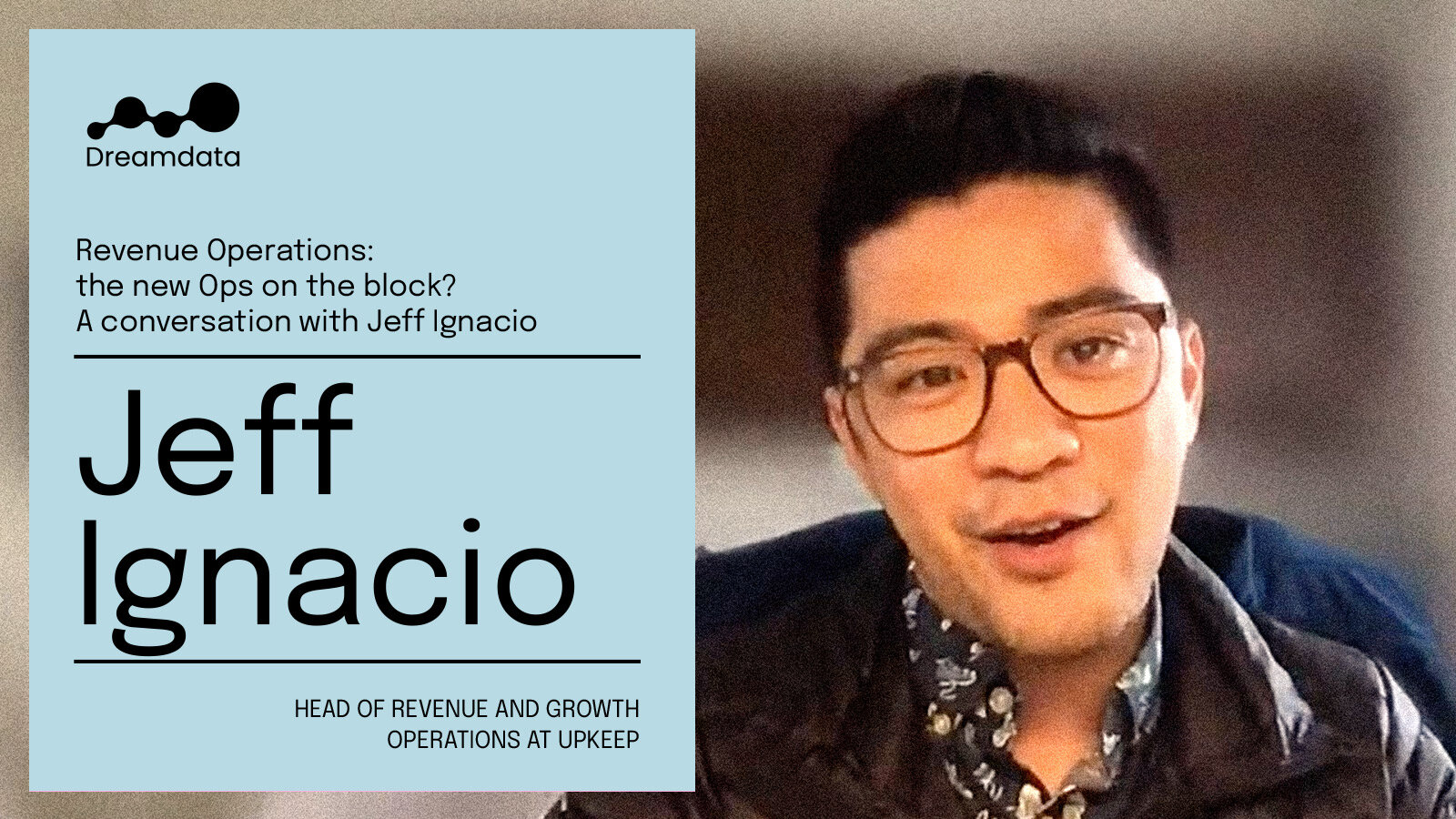Bridging the Revenue Attribution-Revenue Operations gap with Noah Charak
Revenue Operations and Revenue Attribution continue to creep up the list of must-haves in the B2B space. And with B2B growth leaders desperate to make sense of their expanding digital footprint, this isn’t surprising at all.
Revenue Operations has emerged from the Sales Ops space to encompass all revenue-generating teams’ activities - not just Sales. For its part Revenue Attribution has grown from the Marketing corner to connect all touches and activities in the B2B customer journey with revenue.
But besides their obsession with ‘revenue’ how related are these two functions? And how might they work together in helping redefine B2B revenue generation?
To take a closer look at the revenue operations-revenue attribution dynamic, I sat down with Revenue Operations Consultant, Noah Charak.
Noah brings a wealth of experience from the B2B Revenue Operations space. And in his capacity as Senior Sales and Revops consultant at Cremanski & Co, Noah really has his finger on the pulse in terms of go-to-market pains and needs.
Let’s take a look at what he had to say.
1. Noah, could you give us a brief introduction of yourself and your background in Revenue Operations?
“I’m Noah Charak. Chicago Native. Washington University in St Louis Educated. 8 Years in Sales and Revenue Operations. Started my career in New York doing eCommerce and Recruiting Operations.
Pivoted into B2B SaaS when I moved to Berlin in 2016 to be the first Revenue Operations Hire at Adjust GmbH, a mobile marketing attribution platform. Built out the rev ops team and defined the best practices and methodology; helped scale the company from 60 employees to over 250.
I then went on to be Head of Revenue Operations for Camunda and Rasa before joining Cremanski & Co 6 months ago where I am a Senior Consultant for all things Sales & Revenue Operations.”
Definitions:
Revenue Operations (RevOps) is a function in B2B that takes responsibility for the software ecosystem, data and processes of all go-to-market teams. Revenue Operations essentially combines three previously distinct areas: sales, marketing, and customer success operations.
Revenue Attribution is the process of connecting all B2B go-to-market efforts with revenue and pipeline generated. A revenue attribution platform achieves this by collecting, joining and transforming the data from across go-to-market tech stacks. More on B2B Revenue Attribution here.
2. Could you describe your role as Revenue Operations Consultant at Cremanski & Co? What are you helping your clients achieve?
“At Cremanski & Co. I am a Senior Consultant in our Revenue Operations Practice. At any given time I am working with ~5-8 clients on structuring their teams, defining and implementing best practices and honing their analytics among other things.
The clients I work with are very diverse; they include Dental Implants, Construction Management Software, Remote Work Platforms, Pharmaceuticals, Amazon Aggregators, Digital and Physical advertising, and Freight platforms.
The core of my skills as a generalist with a great depth of project experience across the revenue operations discipline has allowed me to offer my help across a variety of projects as well. I am also platform agnostic and have certifications in Salesforce and Hubspot but also work with Pipedrive and FreshSales.
In terms of KPIs, my clients have a variety of different use cases they are working with us on. But, a theme across many is having reportable and actionable analytics.”
3. You mention reportable and actionable analytics as a pain point, how aware would you say your clients are of revenue attribution as a possible solution for this?
“A lot of it depends on the maturity level of the revenue teams.
That is, depending on the tech stack, amount of marketing spend, and the relationship between Marketing and Sales, Attribution can be a central puzzle piece in connecting the dots between marketing activity and sales outcomes.
Looking at the ROI of different channels and campaigns, understanding the conversion rates and quality of leads from different channels and the conversion rates of the channels is also important.
With small marketing teams I've worked with, many are not aware of attribution - or at least not aware of the value it can bring. But for larger digital marketing-driven companies, they understand that a lead source is only the tip of the iceberg when it comes to deal influence.
More mature marketing departments use the power of attribution in order to increase inbound sales influencing their spend and achieving more inbound sales.”
You might also be interested in: Revenue Operations: the new Ops on the block? A conversation with Jeff Ignacio
4. How important would you say Marketing and Sales alignment is, and what role can the tech stack play in pushing alignment?
“It is extremely important to have alignment from a marketing and sales perspective. Especially when it relates to revenue operations, having a dialogue between these departments is necessary.
The tech stack can be used to promote this by creating use-cases for this dialogue. Especially around messaging and strategy related to inside sales.
Marketing Automation tools paired with attribution tools like Dreamdata can enable this conversation by defining which channels to focus on, what messaging to use, and where to optimize across the marketing and sales funnel.”
Check out this post on the role of Revenue Attribution in Sales and Marketing alignment.
5. Both from your previous and current experience, how useful do you reckon a Revenue Attribution platform can be for Revenue Operations?
“I think it can be extremely useful. None of the modern Marketing Automation Tools + Sales CRMs accurately and consistently track revenue attribution data in a way that is reportable and allows for the decision making abilities that modern companies require.
A Revenue Attribution platform like Dreamdata fills a large gap between spend and revenue with a customizable solution that gives you access to all of your data in and out of the platform allowing for powerful reporting and decision making ability.”




